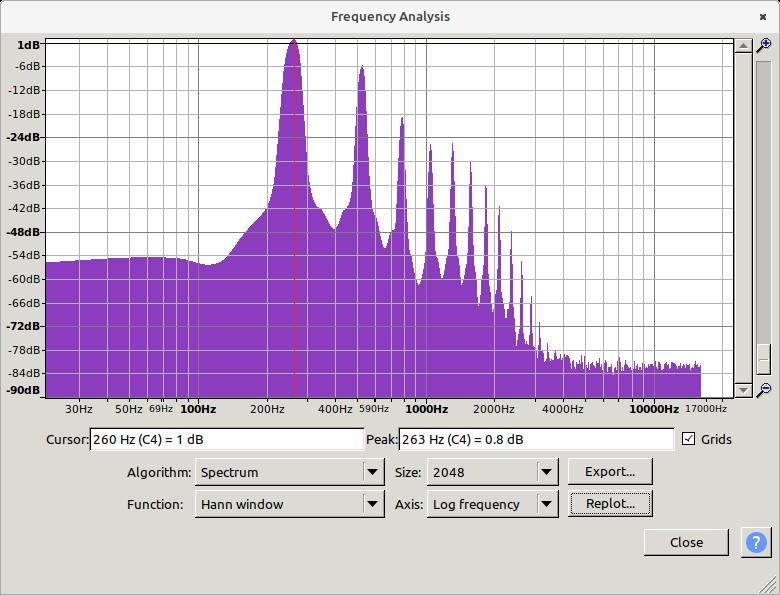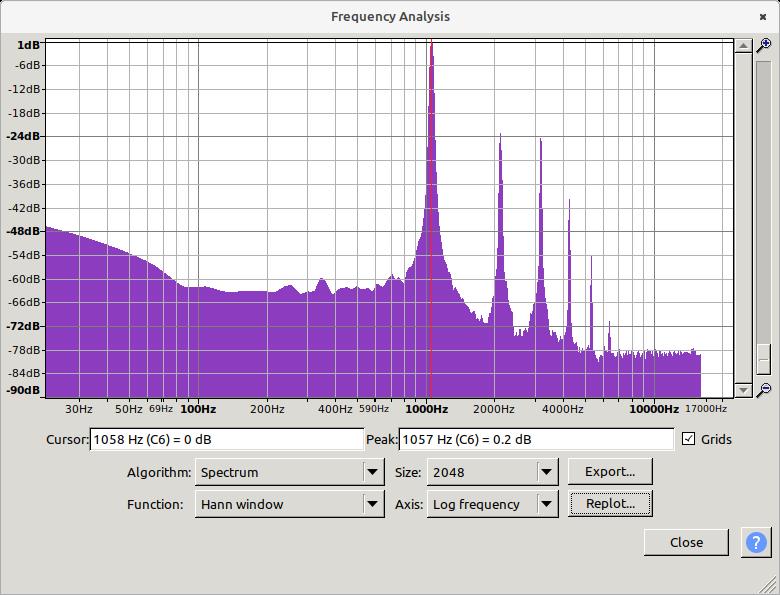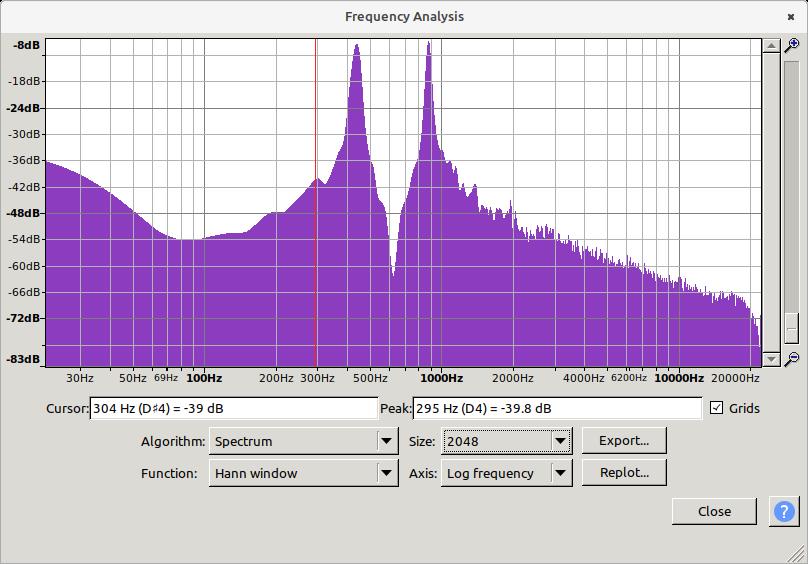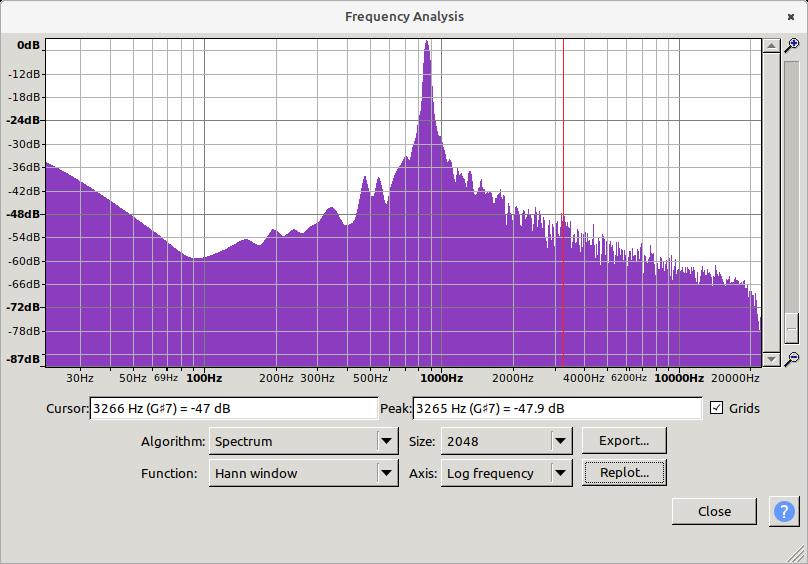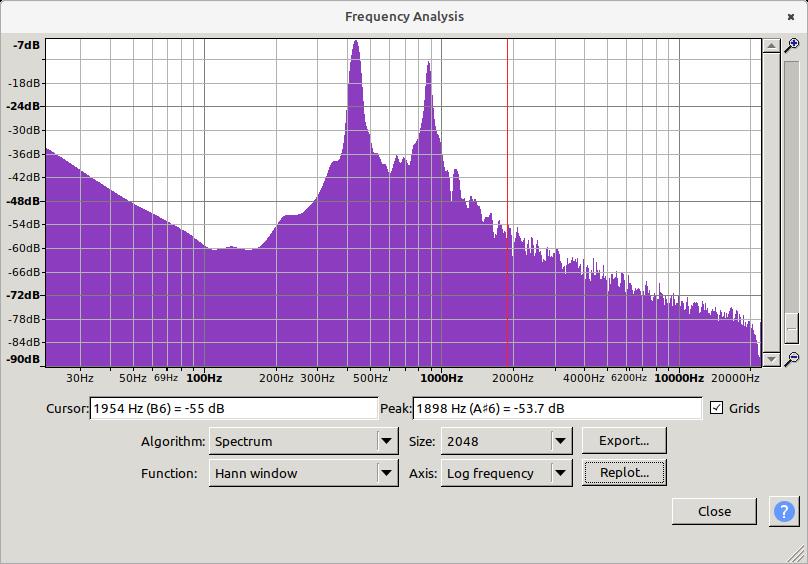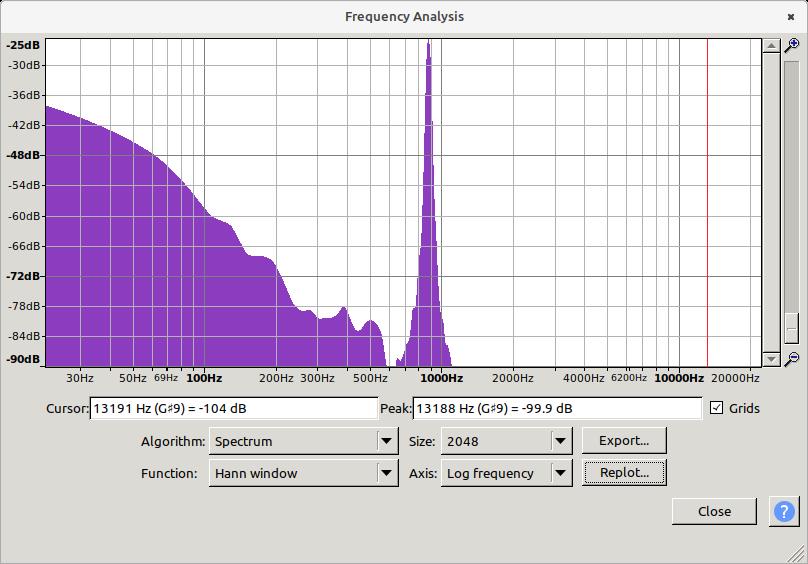D-Lev Imitates Art
TW member (and D-Lev kit owner) RoyP kindly sent me audio samples of his Arthur Harrison 145 Theremin. It took me several hours to mimic the sound with the D-Lev synth, but I think it turned out pretty close to the original, and I'm learning how to better approach these activities with every attempt.
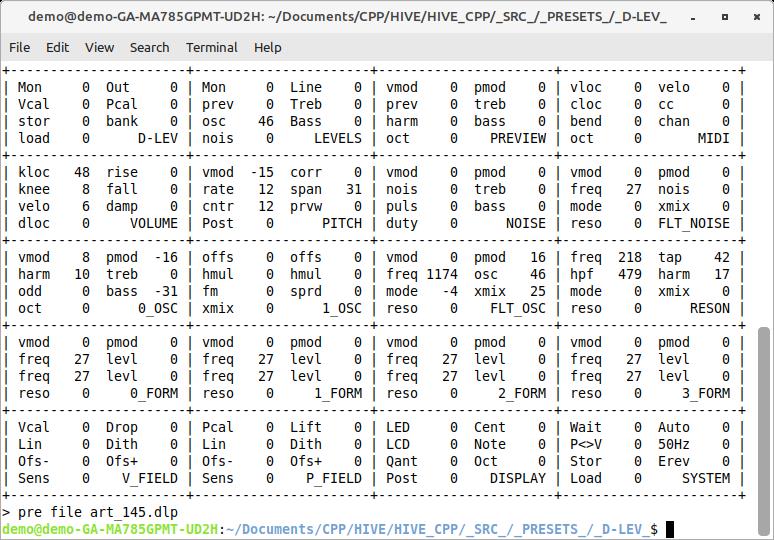
Above is the librarian view of the preset. The main trick can be seen on the FLT_OSC page, where a 2nd order semi-tracking notch filter places a double hump in the harmonics. Fixed (pmod[0]) and perfectly tracking (pmod[32]) filter settings are generally pretty easy to figure out, but those in-between can take a lot of trial and error to get right. I added a bit of volume hand harmonic modulation (0_OSC:vmod[8]) - it's my belief that timbre variation with volume is the main thing that makes a voice feel particularly expressive.
This is a mono preset, to make it stereo one would set RESON:mode[2] and RESON:xmix[8] or so.
As usual, for static analysis I used the spectral view in Audacity and Sonic Visualizer, and for real-time analysis I used Jaaa. And ran into the usual audio weirdness in Linux, but finally figured out how to record without random tick sounds ruining it: open Audacity, then open Sound Settings (from the system tray) | Input | and move the volume slider a little. Whew!
You can listen to the preset here: https://d-lev.com/audio/2022-11-24_since_i_fell.mp3
It's really interesting making D-Lev presets of other Theremins, and it's helped me appreciate the finer points of their sonic makeup.


